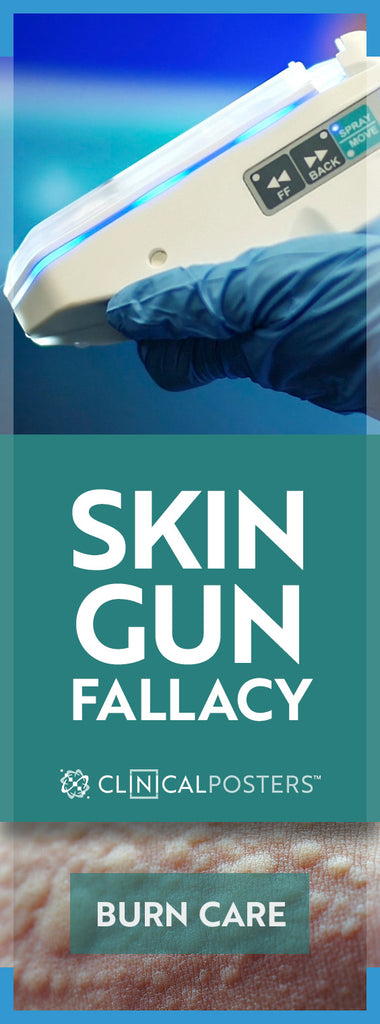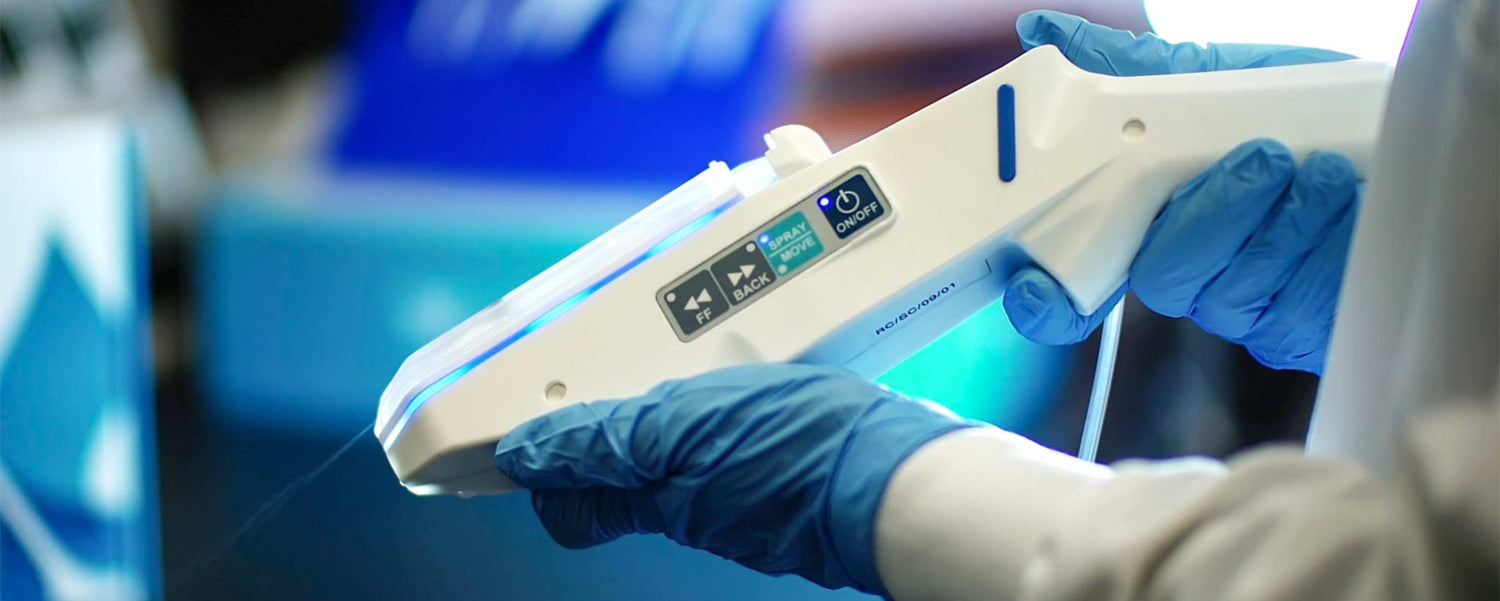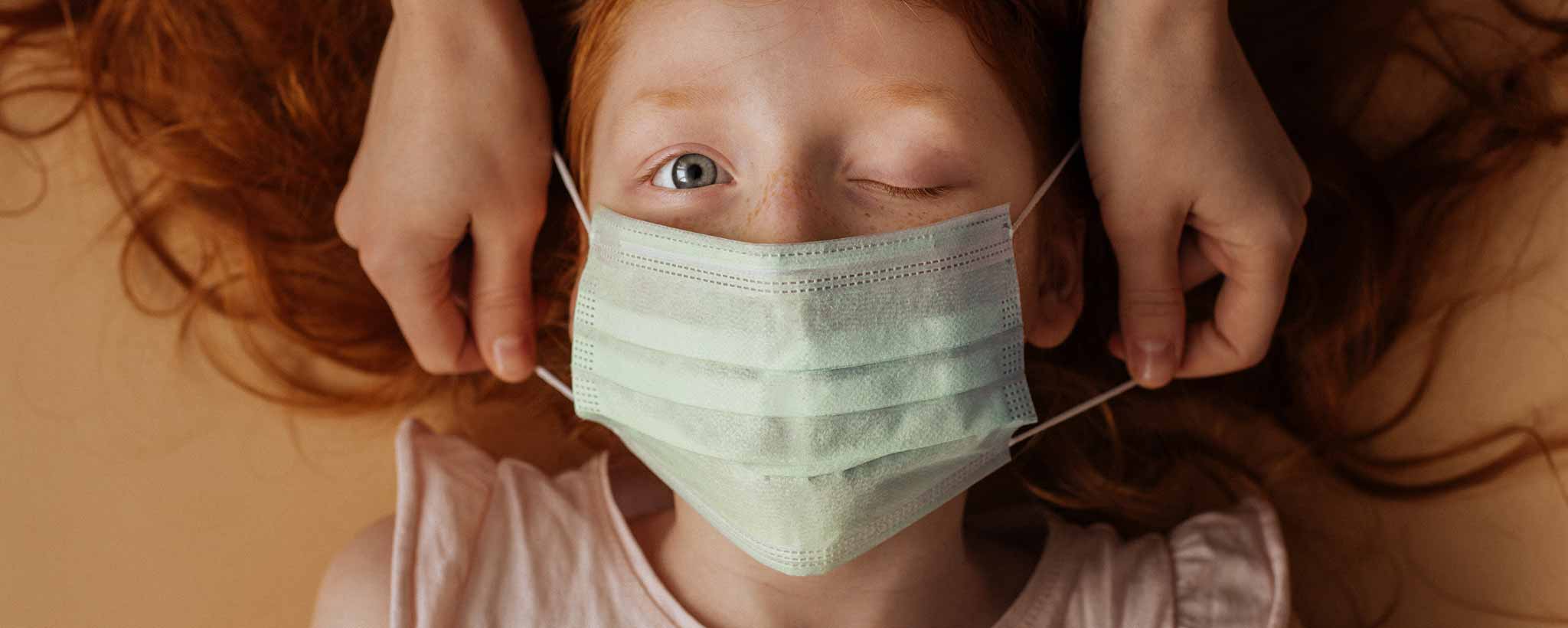Compared with science-fiction results, does this device spray on skin or is it snake oil?
Is It A Hoax?
Have you seen the viral video touting a revolutionary dermatology breakthrough? Hundreds of thousands of viewers are amazed with a miraculous device called the Skin Cell Gun. It resembles a large airbush with a compressor. Instead of spraying paint or dyes, it allegedly sprays stem cells harvested from healthy patient skin, diluted with water.
In the video, Jörge C. Gerlach of McGowan Institute for Regenerative Medicine asserts that burn victims can have large areas of damaged skin regenerated within a few days. Quite compelling! Is the field of regenerative medicine receiving a boost in the arm or a slap on the wrist? Is it legitimate or bogus? Is it fake or is it reality? Is it a hoax, mild exaggeration of the truth, or scientific breakthrough?
What Makes The Video Suspect?

Dramatic before-and-after National Geographic footage is shown. Or is it? Look again. Watch the video yourself and note the omission of published clinical evidence. The smooth skin of the single patient interviewed, Matthew Uram, depicts no evidence of scaring.
The “before” image of second degree burns shows what the patient's “skin probably looked like before treatment.” The healthy “after” footage of blemish-free skin reportedly depicts "what it looked like four days after it was sprayed with his own stem cells." The entire video is a dramatization.
The process involves spraying a wound. Then it is covered with a newly-developed dressing with tubes enmeshed within it and extending from each end. One set of tubes functions as an artery, while the second set functions as a vein.
The tubes are connected to an “artificial vascular system” that provide electrolytes, antibiotics, amino acids and glucose to the wound. The dressing keeps the wound clean and sterile, and provides nutrition for the skin stem cells to encourage them to regenerate new skin. [1]
Bioengineered skin substitutes are not new, and according to The National Institutes of Health resources for stem cell research, harvesting stem cells from skin is viable.
“A primary goal of this work is to identify how undifferentiated stem cells become the differentiated cells that form the tissues and organs. Stem cells, directed to differentiate into specific cell types, offer the possibility of a renewable source of replacement cells and tissues to treat diseases including Alzheimer's disease, spinal cord injury, stroke, burns, heart disease, diabetes, osteoarthritis, and rheumatoid arthritis.” [2]
Differentiation is questioned. As candidly stated on the McGowan Institute’s website, “Understanding and manipulating the complex relationship between the cells and the scaffolding materials, however, represents the great challenge for tissue engineers.
What cells should be used, for example, and should the combination of cells and materials occur in vitro or in vivo?” [3] But they have been hard at work to overcome the obstacles.
Burn victims can suffer indiscriminate damage to skin, hair, fingernails, and cartilage of the ears and nose. How does this spray-on skin solution differentiate between the required cell types? What happens to the dead skin cells and damaged nerve endings?
Since a normal wound can take a week or more to completely heal, [4] how far beneath the epidermis does healing take place in four days after treatment with the Skin Cell Gun? Currently, no claim is made regarding third- or fourth-degree burns as described in the accompanying chart. [5]
Epidermis| Nomenclature | Layer Involved | Appearance | Texture | Time To Heal | Complications |
|---|---|---|---|---|---|
| 1st degree | Epidermis | Redness (erythema) | Dry | ≤ 1 week | None |
| 2nd degree (superficial partial thickness) | Extends into superficial (papillary) dermis | Red with clear blister; blanches with pressure | Moist | 2–3 weeks | Local infection/ |
| 2nd degree (deep partial thickness) | Extends into deep (reticular) dermis | Red-and-white with bloody blisters; less blanching | Moist | Weeks (may progress to third degree) | Scarring, contractures (may require excision and skin grafting) |
| 3rd degree (full thickness) | Extends through entire dermis | Stiff and white/brown | Dry, leathery | Requires excision | Scarring, contractures, amputation |
| 4th degree | Extends through skin, subcutaneous tissue and into underlying muscle and bone | Charred with eschar | Dry | Requires excision | Amputation, significant functional impairment |
“Though the Skin Cell Gun is still experimental, over a dozen patients have already been successfully treated” is the way the 2011 video clip ends. Compare this to over 50,000 treated with Dermagraft® bioengineered skin substitute. [6] Forgive any apparent skeptisism. [7]
Unmistakably, technology is advancing. In this fascinating field of science, we await the publishing of peer-reviewed clinical studies, detailed patent accounts or substantive evidence beyond a man spraying blue water on a pane of glass. [8]
There are three possible sources of stem cells to use for transplants: bone marrow, the bloodstream (peripheral blood), and umbilical cord blood from newborns. Although bone marrow was the first source used in stem cell transplant, peripheral blood is used most often today. [9]
Adult stem cells have been identified in many organs and tissues, including brain, bone marrow, peripheral blood, blood vessels, skeletal muscle, skin, teeth, heart, gut, liver, ovarian epithelium, and testis. They are thought to reside in a specific area of each tissue (called a “stem cell niche”). [10]
📰 February 15, 2018 08:30 – RenovaCare, Inc., (RCAR), announced positive outcomes from its pre-submission meeting with the United States Food and Drug Administration (FDA) regarding the RenovaCare SkinGun™ and CellMist™ System for isolating and spraying a patient’s own stem cells onto burns and wounds for rapid self-healing. —BusinessWire
Returning to the original question, Is the SkinGun real? Apparently clinical research has been funded. There is an actual company developing the product, investigating and documenting protocols. Other companies have contributed research in the field of skin stem cells. However, this gun is not something available in every hospital or even every burn center.
The video clip was a dramatization of various fields of stem cell research—a foregleam of future technologies. On the horizon, other scientists hope to print skin using a modified inkjet printer filled with skin stem cells. [11] Patiently, I reserve enthusiasm for a more formal introduction of skin cell therapies into mainstream use.
The skin cell gun, now known as the SkinGun, along with related cell isolation methodologies, were acquired by RenovaCare, Inc. in 2013. The company continues to develop the technology and treatment protocol for commercial distribution, under the brand names SkinGun and CellMist System respectively. [12]
To support the writing of useful articles about dermatology, ClinicalPosters sells human anatomy charts, scientific posters, and other products online. You may sponsor specific articles, become a ClinicalNovellas Member, or remit a small donation.
ClinicalPosters sells human anatomy charts, scientific posters, and other products online to offset expense of the writing useful articles about dermatology. Slide extra posters into DeuPair Frames without removing from the wall.
Show your support by donating, shopping for ClinicalPins, becoming a ClinicalNovellas Member, or leaving an encouraging comment to keep the research going.
To support the writing of useful articles about dermatology, ClinicalPosters sells human anatomy charts, scientific posters, and other products online. You may sponsor specific articles or remit a small donation.
ClinicalPosters sells human anatomy charts, scientific posters, and other products online to offset expense of the writing useful articles about dermatology. Slide extra posters into DeuPair Frames without removing from the wall.
ClinicalPosters sells human anatomy charts, scientific posters, and other products online. You may remit a small donation or become a ClinicalNovellas Member.
You can support the writing of useful articles about dermatology by sponsoring specific articles, becoming a ClinicalNovellas Member, or remitting a small donation. Visible content is optimized for device size.
The National Geographic piece first aired Monday, February 2011. This article was originally published on ClinicalPosters February 4, 2011. Reference links were updated in 2020.







 Romance & Health Intertwine. Fall in love with a captivating romance miniseries that explores the essence of well-being. Become a ClinicalNovellas member for heartwarming tales.
Romance & Health Intertwine. Fall in love with a captivating romance miniseries that explores the essence of well-being. Become a ClinicalNovellas member for heartwarming tales.






